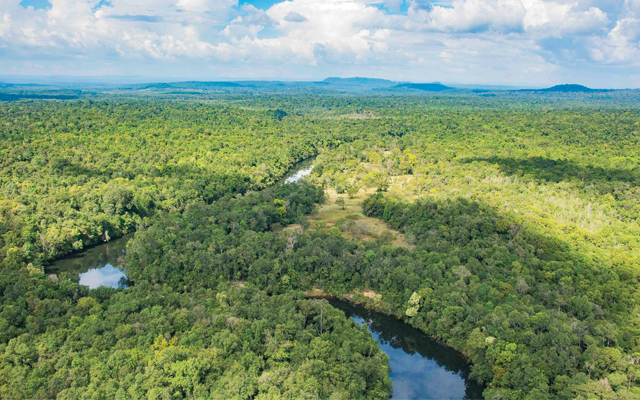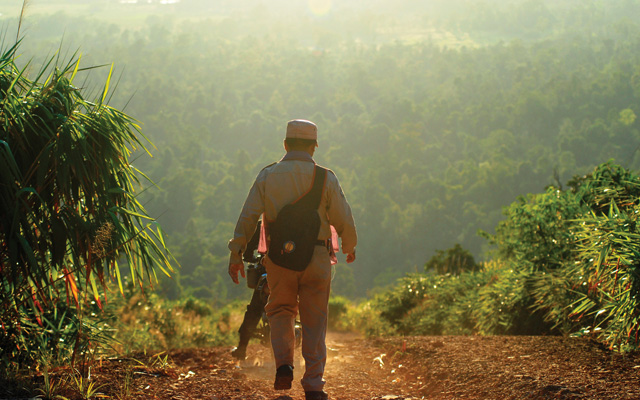Cambodia’s Cardamom Mountains rainforest is being developed as a key ecotourism hub, a move that will lift local economic growth
A major project is underway to make Cambodia’s Cardamom Mountains – the largest remaining intact rainforest in South-east Asia – and surrounding areas a regional ecotourism hub, with a series of tourism products, activities and infrastructure being developed in the Cardamom Mountains-Tonle Sap (CMTS) landscape.
Approved in 2021, the Cambodia sustainable landscape and ecotourism project (CSLEP) is a joint collaboration between the nation’s Ministry of Environment (MoE) and the World Bank. The US$55 million project, which runs until 2027, marks the World Bank’s heaviest tourism investment in the country.

Its aim is to develop ecotourism, cut deforestation, and boost the livelihoods of impoverished communities throughout the seven provinces the Cardamoms span, the Tonle Sap Lake’s flooded forests, and Phnom Kulen in Siem Reap province. The area covers more than 3.8 million hectares, including one of the world’s most productive freshwater fisheries and Indochina’s largest protected forest.
“CSLEP will use ecotourism as a driver to boost economic prosperity of rural communities and strengthen management of the rich natural capital of the CMTS landscape,” MoE undersecretary of state Vann Saravuth said, adding the project also aims to strengthen the value chains of non-timber forest products to further elevate local income.
Many remote communities in the area traditionally rely on illegal logging and wildlife trafficking to support their livelihoods. The aim is to provide them with an alternative income source through tourism to halt these environmentally-detrimental activities and curb the deforestation that plagues the area.
Khin Meng Kheang, director of the MoE’s ecotourism department and CSLEP project manager, said the first phase of the project has seen 90km of roads built to connect target areas. Park ranger offices have also been constructed and 11 ecotourism destinations selected.
“Our landscapes are important green destinations,” he stated. “We need to take advantage of the opportunity to develop green ecotourism, which will support (forest and environmental) protection, law enforcement, and connectivity.”

Hong Sok Heng, business development director at Travel Asia a la Carte, said the area has huge untapped ecotourism potential, welcoming it being sensitively developed.
“It has nature, forests, lakes, mountains and conservation projects. There are also local communities that we can work with and can give benefits to local people.”
Heng pointed to Shinta Mani Wild as an example of an upscale ecolodge in the area that doubles up as a guardian of the forest. The luxury jungle retreat protects more than 300 hectares of forest through a partnership with Wildlife Alliance to support a team of rangers who patrol the area on the lookout for poachers, loggers, and other illegal activities.
Under CSLEP, much needed infrastructure has also been added to connect various outlying areas. These include roads, a major bridge, and a planned network of more than 500km of hiking trails, of which some have already been completed.
“With products, activities, infrastructure, and more being added, I believe it will provide a better way to promote Cambodia to those who wish to enjoy nature,” Heng said, adding that due to upgraded infrastructure nation-wide, it is now possible to travel from Battambang to Koh Kong in the Cardamoms within one day.
“This is a good way to combine the Cardamom Mountains with other destinations, such as Angkor Wat in Siem Reap and Battambang,” Heng noted. “With the new added infrastructure, it will help us to promote the area better. So, we hope we will be able to get more demand.”
Heng added that to attract more visitors, a broader range of restaurants and accommodation is needed.
“Tourism should cater to different markets, both international and domestic, and for all levels of budget, from backpackers to luxury guests.”
A range of accommodation is starting to emerge, from the existing luxurious Shinta Mani Wild and Canvas and Orchid, to mid-scale options, including Krâvanh La Vallée Eco Resort, through to basic camp sites operated by local communities. Later this year, five-star wellness-centred Samanea River Resort and Spa is slated to open in Osoam, Pursat province.
To further promote the area, CSLEP recently organised a four-day fam trip to showcase the latest additions to the area and the potential in a bid to stamp CMTS firmly on the region’s ecotourism map.











